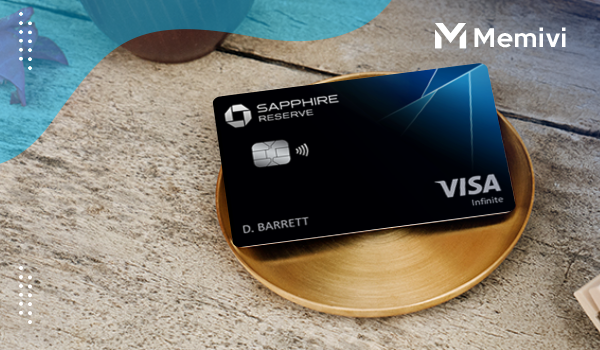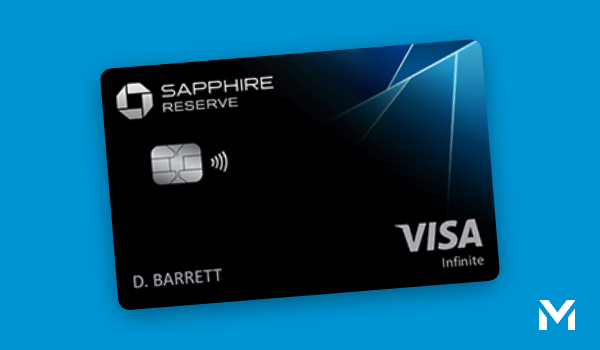
Practical Guide: Using the Card Like a Pro
Getting approved for the Chase Sapphire Reserve opens up a world of premium travel tools—but many cardholders only scratch the surface. Here’s how to fully leverage the card’s potential.
1. Use the $300 Travel Credit Immediately
This is the easiest win. Any travel purchase—like a hotel booking, rideshare, or train ticket—automatically counts toward the credit. Use it early in your cardmember year to unlock higher rewards on future travel purchases (since the 3x and 10x rates only kick in after the credit is used).
2. Book Through Chase Travel for Accelerated Points
- Flights: 5x points
- Hotels and car rentals: 10x points
Always compare Chase Travel prices to direct sites, but when rates are equal, booking through Chase earns significantly more rewards.
3. Transfer Points Strategically
Chase Ultimate Rewards points transfer 1:1 to several top airline and hotel partners. Some of the best uses include:
- Hyatt: Often delivers outsized value for hotel stays.
- United MileagePlus: Great for domestic flights.
- Air France/KLM Flying Blue: Ideal for transatlantic flights, especially on off-peak dates.
Value per point can often exceed 2 cents when transferred strategically, compared to the standard 1.5 cents through Chase Travel.
FAQ: What Most Cardholders Never Think to Ask
1. Can the $300 credit be used for Airbnb or Uber?
Yes. Any purchase coded as “travel” qualifies—including rideshare, lodging platforms, and even parking fees.
2. How does travel insurance actually work?
If you book a trip using the card, you’re covered for delays, cancellations, or lost luggage. The coverage is automatic, but you must file a claim through Chase’s benefits portal within a specified timeframe.
3. Do points earned on authorized user purchases count toward my account?
Yes. You’ll receive all the points from their spending, but they won’t have access to your points.
4. Can I downgrade the card later if I don’t use it enough?
Yes. Chase may allow product changes to a no-fee card like the Sapphire Preferred or Freedom Unlimited.
5. Will lounge access work for my travel companion?
Yes. Priority Pass Select allows entry for the cardholder and up to two guests at most lounges. Terms vary by location.
6. Does Chase Sapphire Reserve earn points on rent payments or taxes?
It depends. Third-party platforms like Plastiq may code the payment as “services,” not “travel,” meaning you’ll earn just 1x. Plus, fees may offset rewards.
7. Can I use points for partial travel purchases?
Yes. If your flight costs $432 and you only have 40,000 points, you can cover $400 and pay the remaining $32 with cash.
8. Is there a mobile app benefit worth knowing?
Yes. The Chase app lets you track rewards, redeem on the go, and activate limited-time offers through Chase Offers.
9. Are there restrictions on booking flights through the travel portal?
Some ultra-low-cost carriers or basic economy fares may not appear. Always compare availability before redeeming points.
10. Will my Global Entry or TSA PreCheck credit renew automatically?
No. You receive the $100 credit once every four years. If you don’t use it, it won’t roll over.
Lesser-Known Hacks to Maximize Value

1. Double Dip on Dining: Use your card at a 3x restaurant and link that same card to a dining rewards platform like Seated, Dosh, or airline dining programs. You’ll earn Chase points plus additional credits or miles.
2. Shop Through Chase Offers: Log into your Chase account and navigate to “Chase Offers.” You’ll find rotating deals such as 10% back at hotels, ride-shares, or subscription services. These stack with your regular rewards.
3. Stack Rewards with Lyft: Chase Sapphire Reserve earns 10x points on Lyft rides through March 2025, and you get free Lyft Pink membership for one year, which includes discounts and priority pickup.
4. Don’t Forget the Concierge: The included Visa Infinite concierge can help with restaurant reservations, travel planning, or event tickets—perfect for high-demand situations where planning ahead makes the difference.
5. Use Travel Delay Coverage to Your Advantage: Flight delayed more than six hours or overnight? You’re eligible for up to $500 per ticket in lodging, meals, and transport. Book through the card and keep your receipts.
Maximizing Long-Term Value
Beyond year-one benefits, the Chase Sapphire Reserve remains valuable with consistent use. Here’s how to lock in long-term ROI:
- Use as your default travel and dining card. You’ll consistently earn 3x on these high-spend categories.
- Transfer points to partners once you’ve planned a redemption, not before. That way, you preserve flexibility.
- Evaluate partner award charts annually to track devaluations. Timing matters.
- Leverage travel insurance proactively, even on small trips—file claims promptly and document everything.
- Review annual benefits each year (like Priority Pass or Lyft perks) to ensure they still fit your lifestyle. If not, consider downgrading or switching.
Alternatives and Complementary Cards
If the Chase Sapphire Reserve doesn’t fully cover your spending habits, here are some strong pairings or alternatives:
Ideal Companions
- Chase Freedom Unlimited: Earn 1.5% cash back on purchases that don’t fall under travel or dining.
- Ink Business Preferred: A great card for freelancers or entrepreneurs who want to earn Ultimate Rewards points on business spending.
Strong Alternatives
- Capital One Venture X: Lower annual fee, similar perks, but less value on point redemptions through the travel portal.
- American Express Platinum: Premium lifestyle benefits (like Fine Hotels & Resorts) and superior airport lounge access—but fewer high-earning categories.
- Citi Strata Premier: Offers 3x on air travel, hotels, gas, and dining with a more modest annual fee and solid transfer partners.
Final Thoughts: Should You Keep or Cancel?
For frequent travelers who value comfort, reliability, and flexibility, the Chase Sapphire Reserve is hard to beat. While the annual fee seems steep at first glance, most users can easily extract well over that in value each year if they: Travel at least twice per year; Book flights or hotels through Chase Travel; Use the included lounge access; Redeem points strategically via transfer partners.
The card is not for casual users who rarely leave town or avoid premium travel. But for anyone who spends significantly on travel and dining—or who wants the convenience of built-in travel protections—this card functions as a financial tool, not just a plastic perk.



 In-Depth Review: The Chase Sapphire Preferred Card <p class='sec-title' style='line-height: normal; font-weight: normal;font-size: 16px !important; text-align: left;margin-top: 8px;margin-bottom: 0px !important;'> Dive into an in-depth review that reveals everything you need to know about the subject </p>
In-Depth Review: The Chase Sapphire Preferred Card <p class='sec-title' style='line-height: normal; font-weight: normal;font-size: 16px !important; text-align: left;margin-top: 8px;margin-bottom: 0px !important;'> Dive into an in-depth review that reveals everything you need to know about the subject </p>  Pay It Off Fast: Your Guide to Crushing Credit Card Debt <p class='sec-title' style='line-height: normal; font-weight: normal;font-size: 16px !important; text-align: left;margin-top: 8px;margin-bottom: 0px !important;'> Pay It Off Fast is a powerful strategy that many overlook on their journey to financial freedom </p>
Pay It Off Fast: Your Guide to Crushing Credit Card Debt <p class='sec-title' style='line-height: normal; font-weight: normal;font-size: 16px !important; text-align: left;margin-top: 8px;margin-bottom: 0px !important;'> Pay It Off Fast is a powerful strategy that many overlook on their journey to financial freedom </p>  Don’t Get Scammed: 5 Red Flags of Credit Card and Banking Fraud <p class='sec-title' style='line-height: normal; font-weight: normal;font-size: 16px !important; text-align: left;margin-top: 8px;margin-bottom: 0px !important;'> It's important to protect yourself from scams in today's digital world </p>
Don’t Get Scammed: 5 Red Flags of Credit Card and Banking Fraud <p class='sec-title' style='line-height: normal; font-weight: normal;font-size: 16px !important; text-align: left;margin-top: 8px;margin-bottom: 0px !important;'> It's important to protect yourself from scams in today's digital world </p>